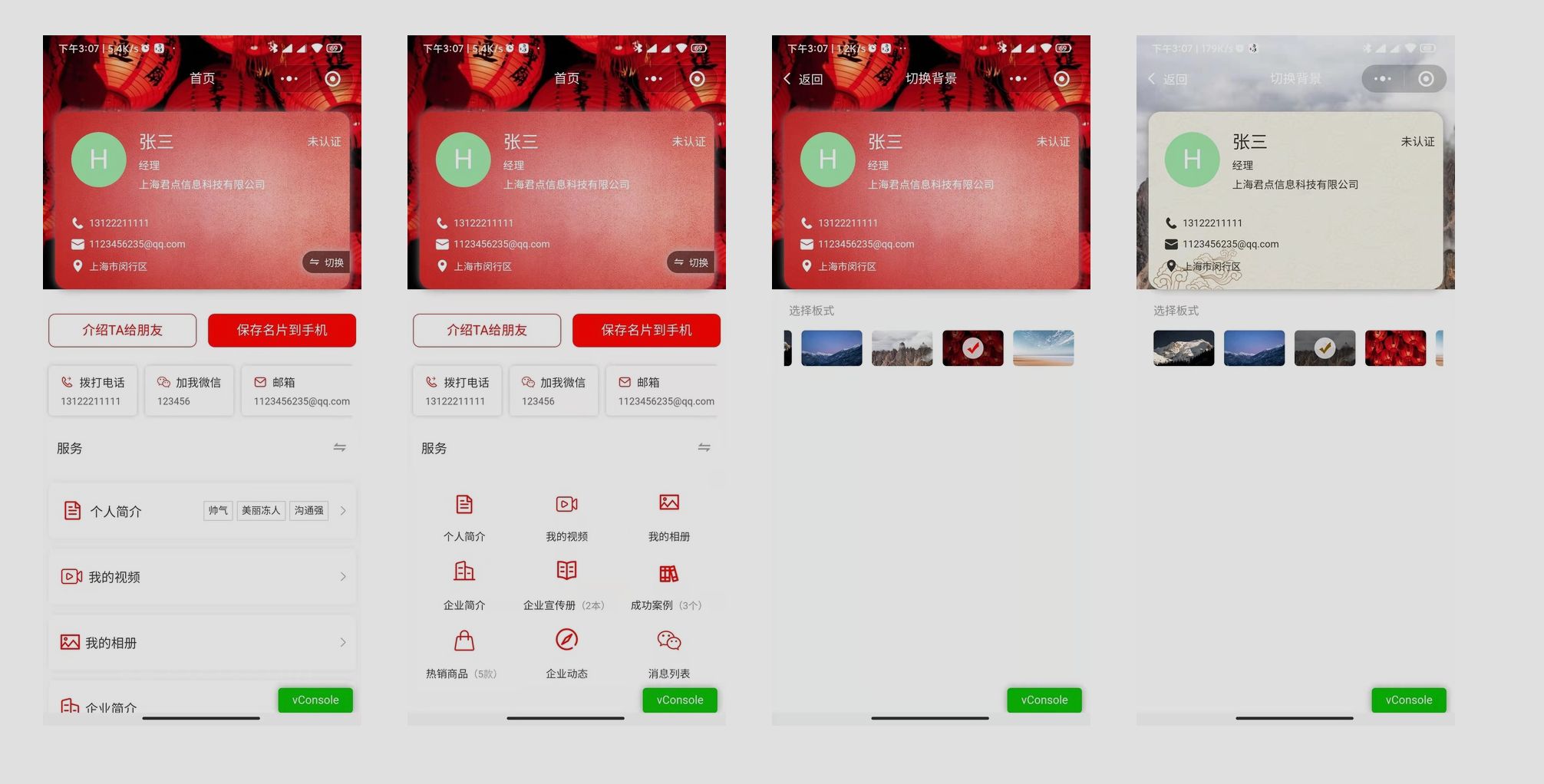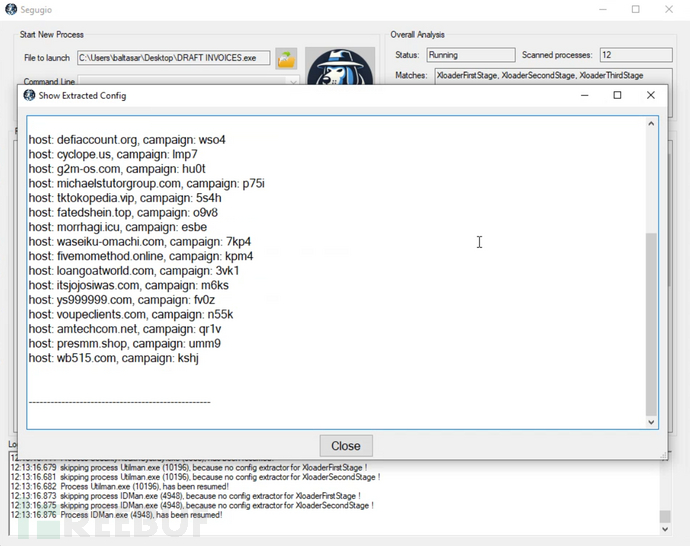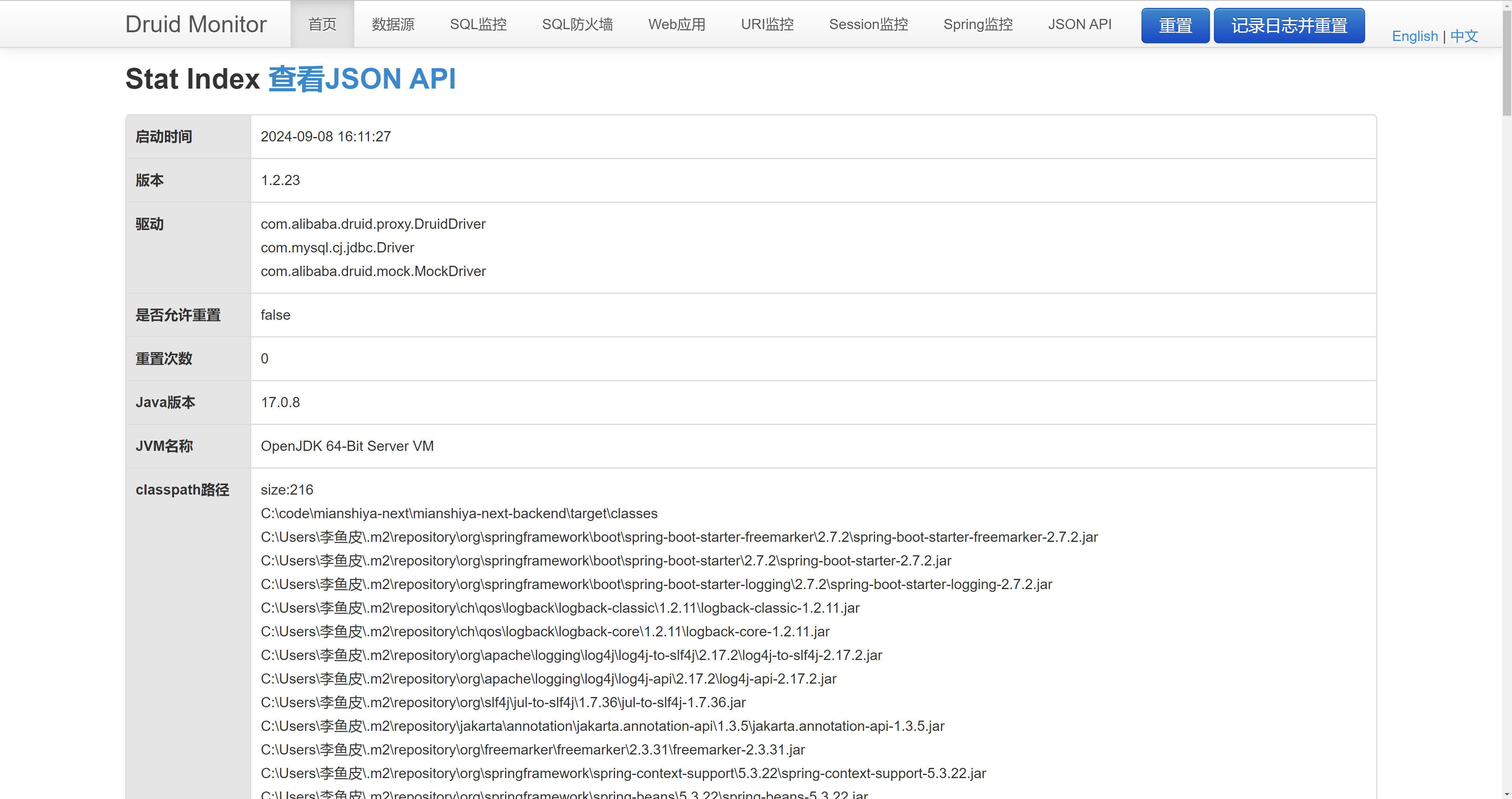Spring 的设计

-
Bean: Spring作为一个IoC容器,最重要的当然是Bean咯
-
BeanFactory: 生产与管理Bean的工厂
-
BeanDefinition: Bean的定义,也就是我们方案中的Class,Spring对它进行了封装
-
BeanDefinitionRegistry: 类似于Bean与BeanFactory的关系,BeanDefinitionRegistry用于管理BeanDefinition
-
BeanDefinitionRegistryPostProcessor: 用于在解析配置类时的处理器,类似于我们方案中的ClassProcessor
-
BeanFactoryPostProcessor: BeanDefinitionRegistryPostProcessor父类,让我们可以再解析配置类之后进行后置处理
-
BeanPostProcessor: Bean的后置处理器,用于在生产Bean的过程中进行一些处理,比如依赖注入,类似我们的AutowiredAnnotationBeanProcessor
-
ApplicationContext: 如果说以上的角色都是在工厂中生产Bean的工人,那么ApplicationContext就是我们Spring的门面,ApplicationContext与BeanFactory是一种组合的关系,所以它完全扩展了BeanFactory的功能,并在其基础上添加了更多特定于企业的功能,比如我们熟知的ApplicationListener(事件监听器)
BeanFactory
BeanFactory是Spring中的一个顶级接口,它定义了获取Bean的方式,Spring中还有另一个接口叫SingletonBeanRegistry,它定义的是操作单例Bean的方式

-
ListableBeanFactory:接口,定义了获取Bean/BeanDefinition列表相关的方法,如
getBeansOfType(Class type) -
AutowireCapableBeanFactory:接口,定义了Bean生命周期相关的方法,如创建bean, 依赖注入,初始化
-
AbstractBeanFactory:抽象类,基本上实现了所有有关Bean操作的方法,定义了Bean生命周期相关的抽象方法
-
AbstractAutowireCapableBeanFactory:抽象类,继承了AbstractBeanFactory,实现了Bean生命周期相关的内容,虽然是个抽象类,但它没有抽象方法
-
DefaultListableBeanFactory:继承与实现以上所有类和接口,是为Spring中最底层的BeanFactory, 自身实现了ListableBeanFactory接口
-
ApplicationContext:也是一个接口
SingletonBeanRegistry

-
DefaultSingletonBeanRegistry: 定义了Bean的缓存池,类似于我们的BeanMap,实现了有关单例的操作,比如
getSingleton(面试常问的三级缓存就在这里) -
FactoryBeanRegistrySupport:提供了对FactoryBean的支持,比如从FactoryBean中获取Bean
BeanDefinition
BeanDefinition其实也是个接口,这里定义了许多和类信息相关的操作方法,方便在生产Bean的时候直接使用,比如getBeanClassName


-
AnnotatedGenericBeanDefinition:解析配置类与解析Import注解带入的类时,就会使用它进行封装
-
ScannedGenericBeanDefinition:封装通过@ComponentScan扫描包所得到的类信息
-
ConfigurationClassBeanDefinition:封装通过@Bean注解所得到的类信息
-
RootBeanDefinition:ConfigurationClassBeanDefinition父类,一般在Spring内部使用,将其他的BeanDefition转化成该类
BeanDefinitionRegistry
定义了与BeanDefiniton相关的操作,如registerBeanDefinition,getBeanDefinition,在BeanFactory中,实现类就是DefaultListableBeanFactory
BeanDefinitionRegistryPostProcessor
public interface BeanDefinitionRegistryPostProcessor extends BeanFactoryPostProcessor {
/**
* Modify the application context's internal bean definition registry after its
* standard initialization. All regular bean definitions will have been loaded,
* but no beans will have been instantiated yet. This allows for adding further
* bean definitions before the next post-processing phase kicks in.
* @param registry the bean definition registry used by the application context
* @throws org.springframework.beans.BeansException in case of errors
*/
void postProcessBeanDefinitionRegistry(BeanDefinitionRegistry registry) throws BeansException;
}该接口只定义了一个功能:处理BeanDefinitonRegistry,也就是解析配置类中的Import、Component、ComponentScan等注解进行相应的处理,处理完毕后将这些类注册成对应的BeanDefinition
在Spring内部中,只有一个实现:ConfigurationClassPostProcessor
深入探究
BeanDefinitionRegistryPostProcessor 是 Spring 容器的一个扩展点,主要用于在 Spring 容器完成对 Bean 的定义信息的加载后、但在它们真正实例化之前,进行额外的操作。
BeanDefinitionRegistryPostProcessor 是Spring中的一个高级扩展接口,继承自 BeanFactoryPostProcessor。它提供了更为深入的方式来干预bean定义的注册过程。
这个接口定义于 org.springframework.beans.factory.support 包内,它的特殊之处在于,除了能够像 BeanFactoryPostProcessor 那样修改已经注册的bean定义(BeanDefinition),还能向注册中心 BeanDefinitionRegistry 中动态地添加或移除bean定义。
BeanDefinitionRegistryPostProcessor 提供了一个核心方法:postProcessBeanDefinitionRegistry(BeanDefinitionRegistry registry)。通过该方法,我们可以直接操作 BeanDefinitionRegistry,这是一个专门用于bean定义注册的中心接口。它允许我们直接注册新的bean定义、修改已有的bean定义或者完全移除某些bean定义。
与 BeanFactoryPostProcessor 的关键区别在于其执行时机。BeanDefinitionRegistryPostProcessor 的方法在所有其他 BeanFactoryPostProcessor 方法之前执行,这确保了它可以在其他处理器操作前先注册或修改bean定义。
总的来说,BeanDefinitionRegistryPostProcessor 提供了一种在Spring容器配置解析阶段动态介入的能力,允许我们在其他配置处理器介入之前,进行更为深入的bean定义的调整和优化。

-
加载配置:
Spring从各种来源(如XML文件、Java配置、注解)加载配置信息。 -
解析配置: 根据加载的配置,
Spring创建对应的BeanDefinition。 -
注册BeanDefinition: 解析完成后,
Spring将这些BeanDefinition对象注册到BeanDefinitionRegistry中。 -
执行BeanDefinitionRegistryPostProcessor: 这个后置处理器提供了一个重要的扩展点,允许在所有
BeanDefinition注册完毕后,但在Bean实例化之前进行一些操作。例如:注册新的BeanDefinition、修改或删除现有的BeanDefinition。 -
执行BeanFactoryPostProcessor: 这个后置处理器提供了另一个扩展点,它主要允许查看或修改已经注册的
BeanDefinition。例如,根据某些条件更改Bean的作用域或属性值。 -
实例化Bean: 这是将
BeanDefinition转换为实际的Bean实例的过程。 -
依赖注入: 在这一步,
Spring框架会按照BeanDefinition的描述为bean实例注入所需的依赖。 -
Bean初始化: 在所有依赖都注入后,特定的初始化方法(如通过
@PostConstruct指定的)将会被调用,完成Bean的最后设置。 -
执行BeanPostProcessor的方法:
BeanPostProcessor提供了拦截的能力,允许在Bean初始化阶段结束之前和之后进行操作。 -
Bean完全初始化: 在此阶段,
Bean完全初始化并准备好被应用程序使用。
测试
public abstract class Fruit {
protected String type;
public String getType() {
return type;
}
public void setType(String type) {
this.type = type;
}
}
@Component
public class Apple extends Fruit {
@Override
public String toString() {
return "Apple{" + "type='" + type + '\'' + "}";
}
}
public class Orange extends Fruit {
@Override
public String toString() {
return "Orange{" + "type='" + type + '\'' + '}';
}
}Orange类没有标注@Component注解,Spring的组件扫描功能默认不会为其创建bean,这个例子中会在OrangeRegisterPostProcessor 里动态创建。
/**
* OrangeRegisterPostProcessor是一个BeanDefinitionRegistryPostProcessor。
* 它的主要作用是检查IOC容器中是否已经包含了名为"orange"的bean定义。
* 如果没有,它会动态创建一个Orange类的bean定义并注册到容器中。
*/
@Component
public class OrangeRegisterPostProcessor implements BeanDefinitionRegistryPostProcessor {
@Override
public void postProcessBeanDefinitionRegistry(BeanDefinitionRegistry registry) {
System.out.println("postProcessBeanDefinitionRegistry in OrangeRegisterPostProcessor started.");
if (!registry.containsBeanDefinition("orange")) {
BeanDefinition orangeDefinition = BeanDefinitionBuilder.genericBeanDefinition(Orange.class).getBeanDefinition();
registry.registerBeanDefinition("orange", orangeDefinition);
}
}
@Override
public void postProcessBeanFactory(ConfigurableListableBeanFactory beanFactory) {
System.out.println("postProcessBeanFactory in OrangeRegisterPostProcessor started.");
}
}为所有的Fruit实例设置属性:
/**
* FruitTypeSetterPostProcessor是一个BeanFactoryPostProcessor。
* 它的主要作用是为所有Fruit类型的bean(Apple和Orange)设置"type"属性。
* 其中,属性的值与bean的名称相同。
*/
@Component
public class FruitTypeSetterPostProcessor implements BeanFactoryPostProcessor {
@Override
public void postProcessBeanFactory(ConfigurableListableBeanFactory beanFactory) {
System.out.println("postProcessBeanFactory in FruitTypeSetterPostProcessor started.");
String[] fruitNames = beanFactory.getBeanNamesForType(Fruit.class);
for (String name : fruitNames) {
BeanDefinition beanDefinition = beanFactory.getBeanDefinition(name);
beanDefinition.getPropertyValues().add("type", name);
}
}
}
public class DemoApplication {
public static void main(String[] args) {
AnnotationConfigApplicationContext context = new AnnotationConfigApplicationContext("com.night.demo");
Apple apple = context.getBean(Apple.class);
System.out.println(apple);
Orange orange = context.getBean(Orange.class);
System.out.println(orange);
}
}BeanFactoryPostProcessor
@FunctionalInterface
public interface BeanFactoryPostProcessor {
/**
* Modify the application context's internal bean factory after its standard
* initialization. All bean definitions will have been loaded, but no beans
* will have been instantiated yet. This allows for overriding or adding
* properties even to eager-initializing beans.
* @param beanFactory the bean factory used by the application context
* @throws org.springframework.beans.BeansException in case of errors
*/
void postProcessBeanFactory(ConfigurableListableBeanFactory beanFactory) throws BeansException;
}所谓BeanFactory的后置处理器,它定义了在解析完配置类后可以调用的处理逻辑,类似于一个插槽,如果我们想在配置类解析完后做点什么,就可以实现该接口。
在Spring内部中,同样只有ConfigurationClassPostProcessor实现了它:用于专门处理加了Configuration注解的类
BeanFactoryPostProcessor位于org.springframework.beans.factory.config包中。它与BeanPostProcessor有相似的核心逻辑,但它们之间的主要区别在于它们所操作的对象。BeanFactoryPostProcessor的主要目的是对Bean的配置元数据进行操作,这意味着它可以影响Bean的初始配置数据。
在实例化beans之前,BeanFactoryPostProcessor有权利修改这些beans的配置。在Spring中,所有的beans在被完全实例化之前都是以BeanDefinition的形式存在的。BeanFactoryPostProcessor为我们提供了一个机会,使我们能够在bean完全实例化之前调整和修改这些BeanDefinition。对BeanDefinition的任何修改都会影响后续的bean实例化和初始化过程。
测试
public abstract class Tint {
protected String label;
public String getLabel() {
return label;
}
public void setLabel(String label) {
this.label = label;
}
}
@Component
public class Blue extends Tint {
@Override
public String toString() {
return "Blue{" + "label='" + label + '\'' + "}";
}
}
@Component
public class Yellow extends Tint {
@Override
public String toString() {
return "Yellow{" + "label='" + label + '\'' + "}";
}
}/**
* BeanFactory后置处理器,用于设置Tint子类bean的label属性。
* label属性的值会设置为"postProcessBeanFactory_" + beanName。
*/
@Component
public class TintLabelSetterFactoryPostProcessor implements BeanFactoryPostProcessor {
/**
* 在所有BeanDefinition加载完成之后,但bean实例化之前,设置label属性。
*
* @param beanFactory 可配置的bean工厂,可以操作BeanDefinition。
* @throws BeansException 处理过程中的异常。
*/
@Override
public void postProcessBeanFactory(ConfigurableListableBeanFactory beanFactory) throws BeansException {
// 遍历所有bean的名字
for (String beanName : beanFactory.getBeanDefinitionNames()) {
BeanDefinition beanDefinition = beanFactory.getBeanDefinition(beanName);
// 检查bean的类名是否非空,且其父类是Tint
if (beanDefinition.getBeanClassName() != null &&
ClassUtils.resolveClassName(beanDefinition.getBeanClassName(), this.getClass().getClassLoader())
.getSuperclass().equals(Tint.class)) {
// 添加或更新(如果属性已存在)label属性的值
beanDefinition.getPropertyValues().add("label", "postProcessBeanFactory_" + beanName);
}
}
}
}
public class DemoApplication {
public static void main(String[] args) {
AnnotationConfigApplicationContext ctx = new AnnotationConfigApplicationContext("com.night.demo");
Blue blue = ctx.getBean(Blue.class);
System.out.println(blue);
}
}也可以使用BeanPostProcessor达到BeanFactoryPostProcessor相似的效果:
/**
* TintLabelSetterPostProcessor类是一个BeanPostProcessor的实现,
* 它为类型为Tint的bean设置'label'属性。该属性的值将被设置为"postProcessAfterInitialization_"加上bean的名称。
* 这里是一个postProcessAfterInitialization方法,它会在bean初始化后,但在返回给调用者之前执行。
*/
@Component
public class TintLabelSetterPostProcessor implements BeanPostProcessor {
/**
* 对bean进行后初始化处理。如果bean是Tint类型,它的'label'属性将被设置。
*
* @param bean 将要处理的bean对象。
* @param beanName bean的名称。
* @return 可能已经修改过的bean。
* @throws BeansException 如果在处理过程中出现错误。
*/
@Override
public Object postProcessAfterInitialization(Object bean, String beanName) throws BeansException {
if (bean instanceof Tint) {
Tint tint = (Tint) bean;
tint.setLabel("postProcessAfterInitialization_" + beanName);
}
return bean;
}
}BeanPostProcessor
Bean的后置处理器,该后置处理器贯穿了Bean的生命周期整个过程,在Bean的创建过程中,一共被调用了9次

-
AutowiredAnnotationBeanPostProcessor:用于推断构造器进行实例化,以及处理Autowired和Value注解
-
CommonAnnotationBeanPostProcessor:处理Java规范中的注解,如Resource、PostConstruct
-
ApplicationListenerDetector: 在Bean的初始化后使用,将实现了ApplicationListener接口的bean添加到事件监听器列表中
-
ApplicationContextAwareProcessor:用于回调实现了Aware接口的Bean
-
ImportAwareBeanPostProcessor: 用于回调实现了ImportAware接口的Bean
ApplicationContext
ApplicationContext作为Spring的核心,以门面模式隔离了BeanFactory,以模板方法模式定义了Spring启动流程的骨架,又以策略模式调用了各式各样的Processor

-
ConfigurableApplicationContext:接口,定义了配置与生命周期相关操作,如refresh
-
AbstractApplicationContext: 抽象类,实现了refresh方法,refresh方法作为Spring核心中的核心,可以说整个Spring皆在refresh之中,所有子类都通过refresh方法启动,在调用该方法之后,将实例化所有单例
-
AnnotationConfigApplicationContext: 在启动时使用相关的注解读取器与扫描器,往Spring容器中注册需要用的处理器,而后在refresh方法在被主流程调用即可
-
AnnotationConfigWebApplicationContext:实现loadBeanDefinitions方法,以期在refresh流程中被调用,从而加载BeanDefintion
-
ClassPathXmlApplicationContext: 同上
三种后置处理器的对比
BeanFactoryPostProcessor 与 BeanPostProcessor 的差异
BeanFactoryPostProcessor 和 BeanPostProcessor 都是 Spring 框架中为了增强容器的处理能力而提供的扩展点。它们都可以对 Bean 进行定制化处理,但它们的关注点和应用时机不同。
BeanFactoryPostProcessor:
-
功能: 允许我们在
Spring容器实例化任何bean之前读取bean的定义(bean的元数据)并进行修改。 -
作用时机: 它会在
BeanFactory的标准初始化之后被调用,此时,所有的bean定义已经被加载到容器中,但还没有实例化任何bean。此时我们可以添加、修改或移除某些bean的定义。 -
常见应用: 动态修改
bean的属性、改变bean的作用域、动态注册新的bean等。 -
示例接口方法:
void postProcessBeanFactory(ConfigurableListableBeanFactory beanFactory) throws BeansException;
BeanPostProcessor:
-
功能: 允许我们在
Spring容器实例化bean之后对bean进行处理,提供了一种机会在bean的初始化前后插入我们的自定义逻辑。 -
作用时机: 它在
bean的生命周期中的两个时间点被调用,即在自定义初始化方法(如@PostConstruct,init-method)之前和之后。 -
常见应用: 对特定的
bean实例进行一些额外处理,如进行某种代理、修改bean的状态等。 -
示例接口方法:
Object postProcessBeforeInitialization(Object bean, String beanName) throws BeansException; 和Object postProcessAfterInitialization(Object bean, String beanName) throws BeansException;
总结:
-
BeanFactoryPostProcessor主要关注于整个容器的配置,允许我们修改bean的定义或元数据。它是容器级别的。 -
BeanPostProcessor主要关注于bean的实例,允许我们在初始化前后对bean实例进行操作。它是bean级别的。
BeanFactoryPostProcessor 与 BeanDefinitionRegistryPostProcessor 的关系
BeanFactoryPostProcessor 和 BeanDefinitionRegistryPostProcessor 都是 Spring 中提供的两个重要的扩展点,它们都允许我们在 Spring 容器启动过程中对 Bean 的定义进行定制处理。但它们的应用时机和功能上存在一些不同。
BeanFactoryPostProcessor:
-
功能: 允许我们在
Spring容器实例化任何bean之前读取bean的定义 (BeanDefinition) 并进行修改。 -
作用时机: 在所有的
bean定义都被加载、但bean实例还未创建的时候执行。 -
常见应用: 修改已加载到容器中的
bean定义的属性,例如更改某个bean的作用域、属性值等。 -
主要方法:
void postProcessBeanFactory(ConfigurableListableBeanFactory beanFactory) throws BeansException;
BeanDefinitionRegistryPostProcessor:
-
功能: 扩展了
BeanFactoryPostProcessor,提供了一个新的方法来修改应用程序的上下文的bean定义。此外,还可以动态注册新的bean定义。 -
作用时机: 它也是在所有
bean定义被加载后执行,但在BeanFactoryPostProcessor之前。 -
常见应用: 动态注册新的
bean定义、修改或移除已有的bean定义。 -
主要方法:
void postProcessBeanDefinitionRegistry(BeanDefinitionRegistry registry) throws BeansException;
总结:
-
BeanFactoryPostProcessor主要是用来修改已经定义的bean定义,而不是注册新的bean。 -
BeanDefinitionRegistryPostProcessor是BeanFactoryPostProcessor的扩展,并提供了额外的能力来动态地注册、修改、移除bean定义。
在 Spring 容器的启动过程中,首先执行的是 BeanDefinitionRegistryPostProcessor 的方法,之后才是 BeanFactoryPostProcessor
Spring的流程

源码解析
整个启动过程分为了两个部分,即容器的初始化与刷新
初始化流程

类继承关系
public class AnnotationConfigApplicationContext extends GenericApplicationContext implements AnnotationConfigRegistry {
private final AnnotatedBeanDefinitionReader reader;
private final ClassPathBeanDefinitionScanner scanner;
}
public class GenericApplicationContext extends AbstractApplicationContext implements BeanDefinitionRegistry {
private final DefaultListableBeanFactory beanFactory;
}构造方法
public AnnotationConfigApplicationContext(Class<?>... componentClasses) {
this();
register(componentClasses);
refresh();
}
public AnnotationConfigApplicationContext() {
StartupStep createAnnotatedBeanDefReader = this.getApplicationStartup().start("spring.context.annotated-bean-reader.create");
this.reader = new AnnotatedBeanDefinitionReader(this);
createAnnotatedBeanDefReader.end();
this.scanner = new ClassPathBeanDefinitionScanner(this);
}this()
调用父类的构造方法,创建 beanFactory
public GenericApplicationContext() {
this.beanFactory = new DefaultListableBeanFactory();
}调用 AnnotatedBeanDefinitionReader 的构造方法,添加 postProcessor
// AnnotationConfigApplicationContext extends AbstractApplicationContext implements BeanDefinitionRegistry
public AnnotatedBeanDefinitionReader(BeanDefinitionRegistry registry, Environment environment) {
Assert.notNull(registry, "BeanDefinitionRegistry must not be null");
Assert.notNull(environment, "Environment must not be null");
this.registry = registry;
this.conditionEvaluator = new ConditionEvaluator(registry, environment, null);
// 向容器中添加 postProcessor
AnnotationConfigUtils.registerAnnotationConfigProcessors(this.registry);
}register
把配置类包装成 beanDefinition 注册到容器中
public void register(Class<?>... componentClasses) {
Assert.notEmpty(componentClasses, "At least one component class must be specified");
StartupStep registerComponentClass = this.getApplicationStartup().start("spring.context.component-classes.register")
.tag("classes", () -> Arrays.toString(componentClasses));
// 把自己注入到 beanDefinition
this.reader.register(componentClasses);
registerComponentClass.end();
}
// AnnotatedBeanDefinitionReader.register()
public void register(Class<?>... componentClasses) {
for (Class<?> componentClass : componentClasses) {
registerBean(componentClass);
}
}看完流程图,我们应该思考一下:如果让你去设计一个 IOC 容器,你会怎么做?首先我肯定会提供一个入口(AnnotationConfigApplicationContext )给用户使用,然后需要去初始化一系列的工具组件:
①:如果我想生成 bean 对象,那么就需要一个 beanFactory 工厂(DefaultListableBeanFactory);
②:如果我想对加了特定注解(如 @Service、@Repository)的类进行读取转化成 BeanDefinition 对象(BeanDefinition 是 Spring 中极其重要的一个概念,它存储了 bean 对象的所有特征信息,如是否单例,是否懒加载,factoryBeanName 等),那么就需要一个注解配置读取器(AnnotatedBeanDefinitionReader);
③:如果我想对用户指定的包目录进行扫描查找 bean 对象,那么还需要一个路径扫描器(ClassPathBeanDefinitionScanner)。
org.springframework.context.annotation.AnnotationConfigUtils#registerAnnotationConfigProcessors
为容器添加一些内置组件了,其中最主要的组件便是 ConfigurationClassPostProcessor 和 AutowiredAnnotationBeanPostProcessor ,前者是一个 beanFactory 后置处理器,用来完成 bean 的扫描与注入工作,后者是一个 bean 后置处理器,用来完成 @AutoWired 自动注入
public static Set<BeanDefinitionHolder> registerAnnotationConfigProcessors(
BeanDefinitionRegistry registry, @Nullable Object source) {
DefaultListableBeanFactory beanFactory = unwrapDefaultListableBeanFactory(registry);
if (beanFactory != null) {
if (!(beanFactory.getDependencyComparator() instanceof AnnotationAwareOrderComparator)) {
beanFactory.setDependencyComparator(AnnotationAwareOrderComparator.INSTANCE);
}
if (!(beanFactory.getAutowireCandidateResolver() instanceof ContextAnnotationAutowireCandidateResolver)) {
beanFactory.setAutowireCandidateResolver(new ContextAnnotationAutowireCandidateResolver());
}
}
Set<BeanDefinitionHolder> beanDefs = new LinkedHashSet<>(8);
// ConfigurationClassPostProcessor implements BeanDefinitionRegistryPostProcessor
// BeanDefinitionRegistryPostProcessor extends BeanFactoryPostProcessor
if (!registry.containsBeanDefinition(CONFIGURATION_ANNOTATION_PROCESSOR_BEAN_NAME)) {
RootBeanDefinition def = new RootBeanDefinition(ConfigurationClassPostProcessor.class);
def.setSource(source);
beanDefs.add(registerPostProcessor(registry, def, CONFIGURATION_ANNOTATION_PROCESSOR_BEAN_NAME));
}
// AutowiredAnnotationBeanPostProcessor implements MergedBeanDefinitionPostProcessor
// MergedBeanDefinitionPostProcessor extends BeanPostProcessor
if (!registry.containsBeanDefinition(AUTOWIRED_ANNOTATION_PROCESSOR_BEAN_NAME)) {
RootBeanDefinition def = new RootBeanDefinition(AutowiredAnnotationBeanPostProcessor.class);
def.setSource(source);
beanDefs.add(registerPostProcessor(registry, def, AUTOWIRED_ANNOTATION_PROCESSOR_BEAN_NAME));
}
// Check for JSR-250 support, and if present add the CommonAnnotationBeanPostProcessor.
// CommonAnnotationBeanPostProcessor extends InitDestroyAnnotationBeanPostProcessor
// InitDestroyAnnotationBeanPostProcessor implements MergedBeanDefinitionPostProcessor
if (jsr250Present && !registry.containsBeanDefinition(COMMON_ANNOTATION_PROCESSOR_BEAN_NAME)) {
RootBeanDefinition def = new RootBeanDefinition(CommonAnnotationBeanPostProcessor.class);
def.setSource(source);
beanDefs.add(registerPostProcessor(registry, def, COMMON_ANNOTATION_PROCESSOR_BEAN_NAME));
}
// Check for JPA support, and if present add the PersistenceAnnotationBeanPostProcessor.
if (jpaPresent && !registry.containsBeanDefinition(PERSISTENCE_ANNOTATION_PROCESSOR_BEAN_NAME)) {
RootBeanDefinition def = new RootBeanDefinition();
try {
def.setBeanClass(ClassUtils.forName(PERSISTENCE_ANNOTATION_PROCESSOR_CLASS_NAME,
AnnotationConfigUtils.class.getClassLoader()));
}
catch (ClassNotFoundException ex) {
throw new IllegalStateException(
"Cannot load optional framework class: " + PERSISTENCE_ANNOTATION_PROCESSOR_CLASS_NAME, ex);
}
def.setSource(source);
beanDefs.add(registerPostProcessor(registry, def, PERSISTENCE_ANNOTATION_PROCESSOR_BEAN_NAME));
}
// EventListenerMethodProcessor BeanFactoryPostProcessor
if (!registry.containsBeanDefinition(EVENT_LISTENER_PROCESSOR_BEAN_NAME)) {
RootBeanDefinition def = new RootBeanDefinition(EventListenerMethodProcessor.class);
def.setSource(source);
beanDefs.add(registerPostProcessor(registry, def, EVENT_LISTENER_PROCESSOR_BEAN_NAME));
}
if (!registry.containsBeanDefinition(EVENT_LISTENER_FACTORY_BEAN_NAME)) {
RootBeanDefinition def = new RootBeanDefinition(DefaultEventListenerFactory.class);
def.setSource(source);
beanDefs.add(registerPostProcessor(registry, def, EVENT_LISTENER_FACTORY_BEAN_NAME));
}
return beanDefs;
}org.springframework.context.annotation.AnnotatedBeanDefinitionReader#doRegisterBean
这个步骤主要是用来解析用户传入的 Spring 配置类,其实也是解析成一个 BeanDefinition 然后注册到容器中
private <T> void doRegisterBean(Class<T> beanClass, @Nullable String name,
@Nullable Class<? extends Annotation>[] qualifiers, @Nullable Supplier<T> supplier,
@Nullable BeanDefinitionCustomizer[] customizers) {
// 解析传入的配置类,实际上这个方法既可以解析配置类,也可以解析 Spring bean 对象
AnnotatedGenericBeanDefinition abd = new AnnotatedGenericBeanDefinition(beanClass);
// 判断是否需要跳过,判断依据是此类上有没有 @Conditional 注解
if (this.conditionEvaluator.shouldSkip(abd.getMetadata())) {
return;
}
abd.setInstanceSupplier(supplier);
ScopeMetadata scopeMetadata = this.scopeMetadataResolver.resolveScopeMetadata(abd);
abd.setScope(scopeMetadata.getScopeName());
String beanName = (name != null ? name : this.beanNameGenerator.generateBeanName(abd, this.registry));
AnnotationConfigUtils.processCommonDefinitionAnnotations(abd);
if (qualifiers != null) {
for (Class<? extends Annotation> qualifier : qualifiers) {
if (Primary.class == qualifier) {
abd.setPrimary(true);
}
else if (Lazy.class == qualifier) {
abd.setLazyInit(true);
}
else {
abd.addQualifier(new AutowireCandidateQualifier(qualifier));
}
}
}
if (customizers != null) {
// 封装成一个 BeanDefinitionHolder
for (BeanDefinitionCustomizer customizer : customizers) {
customizer.customize(abd);
}
}
BeanDefinitionHolder definitionHolder = new BeanDefinitionHolder(abd, beanName);
// 处理 scopedProxyMode
definitionHolder = AnnotationConfigUtils.applyScopedProxyMode(scopeMetadata, definitionHolder, this.registry);
// 把 BeanDefinitionHolder 注册到 registry
BeanDefinitionReaderUtils.registerBeanDefinition(definitionHolder, this.registry);
}刷新流程


我们知道了如何去初始化一个 IOC 容器,那么接下来就是让这个 IOC 容器真正起作用的时候了:即先扫描出要放入容器的 bean,将其包装成 BeanDefinition 对象,然后通过反射创建 bean,并完成赋值操作,这个就是 IOC 容器最简单的功能了
如果用户想在扫描完 bean 之后做一些自定义的操作:假设容器中包含了 a 和 b,那么就动态向容器中注入 c,不满足就注入 d,这种骚操作 Spring 也是支持的,得益于它提供的 BeanFactoryPostProcessor 后置处理器,对应的是上图中的 invokeBeanFactoryPostProcessors 操作
如果用户还想在 bean 的初始化前后做一些操作呢?比如生成代理对象,修改对象属性等,Spring 为我们提供了 BeanPostProcessor 后置处理器,实际上 Spring 容器中的大多数功能都是通过 Bean 后置处理器完成的,Spring 也是给我们提供了添加入口,对应的是上图中的 registerBeanPostProcessors 操作
整个容器创建过程中,如果用户想监听容器启动、刷新等事件,根据这些事件做一些自定义的操作呢?Spring 也早已为我们考虑到了,提供了添加监听器接口和容器事件通知接口,对应的是上图中的 registerListeners 操作
org.springframework.context.support.AbstractApplicationContext#refresh
Spring 中的每一个容器都会调用 refresh 方法进行刷新,无论是 Spring 的父子容器,还是 Spring Cloud Feign 中的 feign 隔离容器,每一个容器都会调用这个方法完成初始化。
public void refresh() throws BeansException, IllegalStateException {
synchronized (this.startupShutdownMonitor) {
StartupStep contextRefresh = this.applicationStartup.start("spring.context.refresh");
// Prepare this context for refreshing.
prepareRefresh();
// Tell the subclass to refresh the internal bean factory.
ConfigurableListableBeanFactory beanFactory = obtainFreshBeanFactory();
// Prepare the bean factory for use in this context.
prepareBeanFactory(beanFactory);
try {
// Allows post-processing of the bean factory in context subclasses.
postProcessBeanFactory(beanFactory);
StartupStep beanPostProcess = this.applicationStartup.start("spring.context.beans.post-process");
// Invoke factory processors registered as beans in the context.
invokeBeanFactoryPostProcessors(beanFactory);
// Register bean processors that intercept bean creation.
registerBeanPostProcessors(beanFactory);
beanPostProcess.end();
// Initialize message source for this context.
initMessageSource();
// Initialize event multicaster for this context.
initApplicationEventMulticaster();
// Initialize other special beans in specific context subclasses.
onRefresh();
// Check for listener beans and register them.
registerListeners();
// Instantiate all remaining (non-lazy-init) singletons.
finishBeanFactoryInitialization(beanFactory);
// Last step: publish corresponding event.
finishRefresh();
}prepareBeanFactory
org.springframework.context.support.AbstractApplicationContext#prepareBeanFactory
顾名思义,这个接口是为 beanFactory 工厂添加一些内置组件,预处理过程
protected void prepareBeanFactory(ConfigurableListableBeanFactory beanFactory) {
// Tell the internal bean factory to use the context's class loader etc.
beanFactory.setBeanClassLoader(getClassLoader());
// 设置 bean 表达式解析器
if (!shouldIgnoreSpel) {
beanFactory.setBeanExpressionResolver(new StandardBeanExpressionResolver(beanFactory.getBeanClassLoader()));
}
beanFactory.addPropertyEditorRegistrar(new ResourceEditorRegistrar(this, getEnvironment()));
// Configure the bean factory with context callbacks.
beanFactory.addBeanPostProcessor(new ApplicationContextAwareProcessor(this));
// 设置忽略自动装配的接口,即不能通过注解自动注入
beanFactory.ignoreDependencyInterface(EnvironmentAware.class);
beanFactory.ignoreDependencyInterface(EmbeddedValueResolverAware.class);
beanFactory.ignoreDependencyInterface(ResourceLoaderAware.class);
beanFactory.ignoreDependencyInterface(ApplicationEventPublisherAware.class);
beanFactory.ignoreDependencyInterface(MessageSourceAware.class);
beanFactory.ignoreDependencyInterface(ApplicationContextAware.class);
beanFactory.ignoreDependencyInterface(ApplicationStartupAware.class);
// BeanFactory interface not registered as resolvable type in a plain factory.
// MessageSource registered (and found for autowiring) as a bean.
// 注册可以解析的自动装配类,即可以在任意组件中通过注解自动注入
beanFactory.registerResolvableDependency(BeanFactory.class, beanFactory);
beanFactory.registerResolvableDependency(ResourceLoader.class, this);
beanFactory.registerResolvableDependency(ApplicationEventPublisher.class, this);
beanFactory.registerResolvableDependency(ApplicationContext.class, this);
// Register early post-processor for detecting inner beans as ApplicationListeners.
beanFactory.addBeanPostProcessor(new ApplicationListenerDetector(this));
// Detect a LoadTimeWeaver and prepare for weaving, if found.
// 添加编译时的 AspectJ
if (!NativeDetector.inNativeImage() && beanFactory.containsBean(LOAD_TIME_WEAVER_BEAN_NAME)) {
beanFactory.addBeanPostProcessor(new LoadTimeWeaverAwareProcessor(beanFactory));
// Set a temporary ClassLoader for type matching.
beanFactory.setTempClassLoader(new ContextTypeMatchClassLoader(beanFactory.getBeanClassLoader()));
}
// Register default environment beans.
if (!beanFactory.containsLocalBean(ENVIRONMENT_BEAN_NAME)) {
beanFactory.registerSingleton(ENVIRONMENT_BEAN_NAME, getEnvironment());
}
if (!beanFactory.containsLocalBean(SYSTEM_PROPERTIES_BEAN_NAME)) {
beanFactory.registerSingleton(SYSTEM_PROPERTIES_BEAN_NAME, getEnvironment().getSystemProperties());
}
if (!beanFactory.containsLocalBean(SYSTEM_ENVIRONMENT_BEAN_NAME)) {
beanFactory.registerSingleton(SYSTEM_ENVIRONMENT_BEAN_NAME, getEnvironment().getSystemEnvironment());
}
if (!beanFactory.containsLocalBean(APPLICATION_STARTUP_BEAN_NAME)) {
beanFactory.registerSingleton(APPLICATION_STARTUP_BEAN_NAME, getApplicationStartup());
}
}invokeBeanFactoryPostProcessors
org.springframework.context.support.PostProcessorRegistrationDelegate#invokeBeanFactoryPostProcessors
Spring 在扫描完所有的 bean 转成 BeanDefinition 时候,我们是可以做一些自定义操作的,这得益于 Spring 为我们提供的 BeanFactoryPostProcessor 接口。
其中 BeanFactoryPostProcessor 又有一个子接口 BeanDefinitionRegistryPostProcessor ,前者会把 ConfigurableListableBeanFactory 暴露给我们使用,后者会把 BeanDefinitionRegistry 注册器暴露给我们使用,一旦获取到注册器,我们就可以按需注入了,例如搞定这种需求:假设容器中包含了 a 和 b,那么就动态向容器中注入 c,不满足就注入 d。
熟悉 Spring 的同学都知道,Spring 中的同类型组件是允许我们控制顺序的,比如在 AOP 中我们常用的 @Order 注解,这里的 BeanFactoryPostProcessor 接口当然也是提供了顺序,最先被执行的是实现了 PriorityOrdered 接口的实现类,然后再到实现了 Ordered 接口的实现类,最后就是剩下来的常规 BeanFactoryPostProcessor 类
public static void invokeBeanFactoryPostProcessors(
ConfigurableListableBeanFactory beanFactory, List<BeanFactoryPostProcessor> beanFactoryPostProcessors) {
// WARNING: Although it may appear that the body of this method can be easily
// refactored to avoid the use of multiple loops and multiple lists, the use
// of multiple lists and multiple passes over the names of processors is
// intentional. We must ensure that we honor the contracts for PriorityOrdered
// and Ordered processors. Specifically, we must NOT cause processors to be
// instantiated (via getBean() invocations) or registered in the ApplicationContext
// in the wrong order.
//
// Before submitting a pull request (PR) to change this method, please review the
// list of all declined PRs involving changes to PostProcessorRegistrationDelegate
// to ensure that your proposal does not result in a breaking change:
// https://github.com/spring-projects/spring-framework/issues?q=PostProcessorRegistrationDelegate+is%3Aclosed+label%3A%22status%3A+declined%22
// Invoke BeanDefinitionRegistryPostProcessors first, if any.
// 代表执行过的 BeanDefinitionRegistryPostProcessor
Set<String> processedBeans = new HashSet<>();
if (beanFactory instanceof BeanDefinitionRegistry) {
BeanDefinitionRegistry registry = (BeanDefinitionRegistry) beanFactory;
// 常规后置处理器集合,即实现了 BeanFactoryPostProcessor 接口
List<BeanFactoryPostProcessor> regularPostProcessors = new ArrayList<>();
// 注册后置处理器集合,即实现了 BeanDefinitionRegistryPostProcessor 接口
List<BeanDefinitionRegistryPostProcessor> registryProcessors = new ArrayList<>();
// 处理自定义的 beanFactoryPostProcessors(指调用 context.addBeanFactoryPostProcessor() 方法),一般这里都没有
for (BeanFactoryPostProcessor postProcessor : beanFactoryPostProcessors) {
if (postProcessor instanceof BeanDefinitionRegistryPostProcessor) {
BeanDefinitionRegistryPostProcessor registryProcessor =
(BeanDefinitionRegistryPostProcessor) postProcessor;
registryProcessor.postProcessBeanDefinitionRegistry(registry);
registryProcessors.add(registryProcessor);
}
else {
regularPostProcessors.add(postProcessor);
}
}
// Do not initialize FactoryBeans here: We need to leave all regular beans
// uninitialized to let the bean factory post-processors apply to them!
// Separate between BeanDefinitionRegistryPostProcessors that implement
// PriorityOrdered, Ordered, and the rest.
// 定义一个变量 currentRegistryProcessors,表示当前要处理的 BeanFactoryPostProcessors
List<BeanDefinitionRegistryPostProcessor> currentRegistryProcessors = new ArrayList<>();
// First, invoke the BeanDefinitionRegistryPostProcessors that implement PriorityOrdered.
// 这里只会查找出一个【ConfigurationClassPostProcessor】
String[] postProcessorNames =
beanFactory.getBeanNamesForType(BeanDefinitionRegistryPostProcessor.class, true, false);
for (String ppName : postProcessorNames) {
if (beanFactory.isTypeMatch(ppName, PriorityOrdered.class)) {
currentRegistryProcessors.add(beanFactory.getBean(ppName, BeanDefinitionRegistryPostProcessor.class));
// 添加到 processedBeans,表示已经处理过这个类了
processedBeans.add(ppName);
}
}
sortPostProcessors(currentRegistryProcessors, beanFactory);
// 添加到 registry 中
registryProcessors.addAll(currentRegistryProcessors);
// 执行 [postProcessBeanDefinitionRegistry] 回调方法
invokeBeanDefinitionRegistryPostProcessors(currentRegistryProcessors, registry, beanFactory.getApplicationStartup());
// 将 currentRegistryProcessors 变量清空,下面会继续用到
currentRegistryProcessors.clear();
// Next, invoke the BeanDefinitionRegistryPostProcessors that implement Ordered.
// 因为【ConfigurationClassPostProcessor】已经完成了 postProcessBeanDefinitionRegistry() 方法,已经向容器中完成扫描工作,所以容器会有很多个组件
postProcessorNames = beanFactory.getBeanNamesForType(BeanDefinitionRegistryPostProcessor.class, true, false);
for (String ppName : postProcessorNames) {
// 判断 processedBeans 是否处理过这个类,且是否实现 Ordered 接口
if (!processedBeans.contains(ppName) && beanFactory.isTypeMatch(ppName, Ordered.class)) {
currentRegistryProcessors.add(beanFactory.getBean(ppName, BeanDefinitionRegistryPostProcessor.class));
processedBeans.add(ppName);
}
}
sortPostProcessors(currentRegistryProcessors, beanFactory);
registryProcessors.addAll(currentRegistryProcessors);
invokeBeanDefinitionRegistryPostProcessors(currentRegistryProcessors, registry, beanFactory.getApplicationStartup());
currentRegistryProcessors.clear();
// Finally, invoke all other BeanDefinitionRegistryPostProcessors until no further ones appear.
// 最后,从容器中查找剩余所有常规的 BeanDefinitionRegistryPostProcessors 类型
boolean reiterate = true;
while (reiterate) {
reiterate = false;
postProcessorNames = beanFactory.getBeanNamesForType(BeanDefinitionRegistryPostProcessor.class, true, false);
for (String ppName : postProcessorNames) {
// 判断 processedBeans 是否处理过这个类
if (!processedBeans.contains(ppName)) {
currentRegistryProcessors.add(beanFactory.getBean(ppName, BeanDefinitionRegistryPostProcessor.class));
processedBeans.add(ppName);
// 将标识设置为 true,继续循环查找,可能随时因为防止下面调用了 invokeBeanDefinitionRegistryPostProcessors() 方法引入新的后置处理器
reiterate = true;
}
}
sortPostProcessors(currentRegistryProcessors, beanFactory);
registryProcessors.addAll(currentRegistryProcessors);
invokeBeanDefinitionRegistryPostProcessors(currentRegistryProcessors, registry, beanFactory.getApplicationStartup());
currentRegistryProcessors.clear();
}
// Now, invoke the postProcessBeanFactory callback of all processors handled so far.
// 现在执行 registryProcessors 的 [postProcessBeanFactory] 回调方法
invokeBeanFactoryPostProcessors(registryProcessors, beanFactory);
// 执行 regularPostProcessors 的 [postProcessBeanFactory] 回调方法,也包含用户手动调用 addBeanFactoryPostProcessor() 方法添加的 BeanFactoryPostProcessor
invokeBeanFactoryPostProcessors(regularPostProcessors, beanFactory);
}
else {
// Invoke factory processors registered with the context instance.
invokeBeanFactoryPostProcessors(beanFactoryPostProcessors, beanFactory);
}
// Do not initialize FactoryBeans here: We need to leave all regular beans
// uninitialized to let the bean factory post-processors apply to them!
String[] postProcessorNames =
beanFactory.getBeanNamesForType(BeanFactoryPostProcessor.class, true, false);
// Separate between BeanFactoryPostProcessors that implement PriorityOrdered,
// Ordered, and the rest.
List<BeanFactoryPostProcessor> priorityOrderedPostProcessors = new ArrayList<>();
List<String> orderedPostProcessorNames = new ArrayList<>();
List<String> nonOrderedPostProcessorNames = new ArrayList<>();
for (String ppName : postProcessorNames) {
// 判断是否已经处理过,因为 postProcessorNames 其实包含了上面步骤处理过的 BeanDefinitionRegistry 类型
if (processedBeans.contains(ppName)) {
// skip - already processed in first phase above
}
else if (beanFactory.isTypeMatch(ppName, PriorityOrdered.class)) {
priorityOrderedPostProcessors.add(beanFactory.getBean(ppName, BeanFactoryPostProcessor.class));
}
else if (beanFactory.isTypeMatch(ppName, Ordered.class)) {
orderedPostProcessorNames.add(ppName);
}
else {
nonOrderedPostProcessorNames.add(ppName);
}
}
// First, invoke the BeanFactoryPostProcessors that implement PriorityOrdered.
sortPostProcessors(priorityOrderedPostProcessors, beanFactory);
invokeBeanFactoryPostProcessors(priorityOrderedPostProcessors, beanFactory);
// Next, invoke the BeanFactoryPostProcessors that implement Ordered.
// 接下来,把 orderedPostProcessorNames 转成 orderedPostProcessors 集合
List<BeanFactoryPostProcessor> orderedPostProcessors = new ArrayList<>(orderedPostProcessorNames.size());
for (String postProcessorName : orderedPostProcessorNames) {
orderedPostProcessors.add(beanFactory.getBean(postProcessorName, BeanFactoryPostProcessor.class));
}
sortPostProcessors(orderedPostProcessors, beanFactory);
invokeBeanFactoryPostProcessors(orderedPostProcessors, beanFactory);
// Finally, invoke all other BeanFactoryPostProcessors.
// 最后把 nonOrderedPostProcessorNames 转成 nonOrderedPostProcessors 集合
List<BeanFactoryPostProcessor> nonOrderedPostProcessors = new ArrayList<>(nonOrderedPostProcessorNames.size());
for (String postProcessorName : nonOrderedPostProcessorNames) {
nonOrderedPostProcessors.add(beanFactory.getBean(postProcessorName, BeanFactoryPostProcessor.class));
}
invokeBeanFactoryPostProcessors(nonOrderedPostProcessors, beanFactory);
// Clear cached merged bean definitions since the post-processors might have
// modified the original metadata, e.g. replacing placeholders in values...
beanFactory.clearMetadataCache();
}registerBeanPostProcessors
org.springframework.context.support.PostProcessorRegistrationDelegate#registerBeanPostProcessors
这一步是向容器中注入 BeanPostProcessor ,注意这里仅仅是向容器中注入而非使用。
public static void registerBeanPostProcessors(
ConfigurableListableBeanFactory beanFactory, AbstractApplicationContext applicationContext) {
// WARNING: Although it may appear that the body of this method can be easily
// refactored to avoid the use of multiple loops and multiple lists, the use
// of multiple lists and multiple passes over the names of processors is
// intentional. We must ensure that we honor the contracts for PriorityOrdered
// and Ordered processors. Specifically, we must NOT cause processors to be
// instantiated (via getBean() invocations) or registered in the ApplicationContext
// in the wrong order.
//
// Before submitting a pull request (PR) to change this method, please review the
// list of all declined PRs involving changes to PostProcessorRegistrationDelegate
// to ensure that your proposal does not result in a breaking change:
// https://github.com/spring-projects/spring-framework/issues?q=PostProcessorRegistrationDelegate+is%3Aclosed+label%3A%22status%3A+declined%22
String[] postProcessorNames = beanFactory.getBeanNamesForType(BeanPostProcessor.class, true, false);
// Register BeanPostProcessorChecker that logs an info message when
// a bean is created during BeanPostProcessor instantiation, i.e. when
// a bean is not eligible for getting processed by all BeanPostProcessors.
int beanProcessorTargetCount = beanFactory.getBeanPostProcessorCount() + 1 + postProcessorNames.length;
beanFactory.addBeanPostProcessor(new BeanPostProcessorChecker(beanFactory, beanProcessorTargetCount));
// Separate between BeanPostProcessors that implement PriorityOrdered,
// Ordered, and the rest.
List<BeanPostProcessor> priorityOrderedPostProcessors = new ArrayList<>();
List<BeanPostProcessor> internalPostProcessors = new ArrayList<>();
List<String> orderedPostProcessorNames = new ArrayList<>();
List<String> nonOrderedPostProcessorNames = new ArrayList<>();
for (String ppName : postProcessorNames) {
if (beanFactory.isTypeMatch(ppName, PriorityOrdered.class)) {
BeanPostProcessor pp = beanFactory.getBean(ppName, BeanPostProcessor.class);
priorityOrderedPostProcessors.add(pp);
if (pp instanceof MergedBeanDefinitionPostProcessor) {
internalPostProcessors.add(pp);
}
}
else if (beanFactory.isTypeMatch(ppName, Ordered.class)) {
orderedPostProcessorNames.add(ppName);
}
else {
nonOrderedPostProcessorNames.add(ppName);
}
}
// First, register the BeanPostProcessors that implement PriorityOrdered.
sortPostProcessors(priorityOrderedPostProcessors, beanFactory);
registerBeanPostProcessors(beanFactory, priorityOrderedPostProcessors);
// Next, register the BeanPostProcessors that implement Ordered.
List<BeanPostProcessor> orderedPostProcessors = new ArrayList<>(orderedPostProcessorNames.size());
for (String ppName : orderedPostProcessorNames) {
BeanPostProcessor pp = beanFactory.getBean(ppName, BeanPostProcessor.class);
orderedPostProcessors.add(pp);
if (pp instanceof MergedBeanDefinitionPostProcessor) {
internalPostProcessors.add(pp);
}
}
sortPostProcessors(orderedPostProcessors, beanFactory);
registerBeanPostProcessors(beanFactory, orderedPostProcessors);
// Now, register all regular BeanPostProcessors.
List<BeanPostProcessor> nonOrderedPostProcessors = new ArrayList<>(nonOrderedPostProcessorNames.size());
for (String ppName : nonOrderedPostProcessorNames) {
BeanPostProcessor pp = beanFactory.getBean(ppName, BeanPostProcessor.class);
nonOrderedPostProcessors.add(pp);
if (pp instanceof MergedBeanDefinitionPostProcessor) {
internalPostProcessors.add(pp);
}
}
registerBeanPostProcessors(beanFactory, nonOrderedPostProcessors);
// Finally, re-register all internal BeanPostProcessors.
sortPostProcessors(internalPostProcessors, beanFactory);
registerBeanPostProcessors(beanFactory, internalPostProcessors);
// Re-register post-processor for detecting inner beans as ApplicationListeners,
// moving it to the end of the processor chain (for picking up proxies etc).
// 给容器中添加【ApplicationListenerDetector】 beanPostProcessor,判断是不是监听器,如果是就把 bean 放到容器中保存起来
// 此时容器中默认会有 6 个内置的 beanPostProcessor
// 0 = {ApplicationContextAwareProcessor@1632}
// 1 = {ConfigurationClassPostProcessor$ImportAwareBeanPostProcessor@1633}
// 2 = {PostProcessorRegistrationDelegate$BeanPostProcessorChecker@1634}
// 3 = {CommonAnnotationBeanPostProcessor@1635}
// 4 = {AutowiredAnnotationBeanPostProcessor@1636}
// 5 = {ApplicationListenerDetector@1637}
beanFactory.addBeanPostProcessor(new ApplicationListenerDetector(applicationContext));
}initApplicationEventMulticaster
org.springframework.context.support.AbstractApplicationContext#initApplicationEventMulticaster
在整个容器创建过程中,Spring 会发布很多容器事件,如容器启动、刷新、关闭等,这个功能的实现得益于这里的 ApplicationEventMulticaster 广播器组件,通过它来派发事件通知。
在这里 Spring 也为我们提供了扩展,SimpleApplicationEventMulticaster 默认是同步的,如果我们想改成异步的,只需要在容器里自定义一个 name 为 applicationEventMulticaster 的容器即可,类似的思想在后续的 Spring Boot 中会有更多的体现,这里不再赘述。
protected void initApplicationEventMulticaster() {
ConfigurableListableBeanFactory beanFactory = getBeanFactory();
if (beanFactory.containsLocalBean(APPLICATION_EVENT_MULTICASTER_BEAN_NAME)) {
this.applicationEventMulticaster =
beanFactory.getBean(APPLICATION_EVENT_MULTICASTER_BEAN_NAME, ApplicationEventMulticaster.class);
if (logger.isTraceEnabled()) {
logger.trace("Using ApplicationEventMulticaster [" + this.applicationEventMulticaster + "]");
}
}
else {
this.applicationEventMulticaster = new SimpleApplicationEventMulticaster(beanFactory);
beanFactory.registerSingleton(APPLICATION_EVENT_MULTICASTER_BEAN_NAME, this.applicationEventMulticaster);
if (logger.isTraceEnabled()) {
logger.trace("No '" + APPLICATION_EVENT_MULTICASTER_BEAN_NAME + "' bean, using " +
"[" + this.applicationEventMulticaster.getClass().getSimpleName() + "]");
}
}
}org.springframework.context.support.AbstractApplicationContext#registerListeners
如果用户想监听容器事件,那么就必须按照规范实现 ApplicationListener 接口并放入到容器中,在这里会被 Spring 扫描到,添加到 ApplicationEventMulticaster 广播器里,以后就可以发布事件通知,对应的 Listener 就会收到消息进行处理。
protected void registerListeners() {
// Register statically specified listeners first.
for (ApplicationListener<?> listener : getApplicationListeners()) {
getApplicationEventMulticaster().addApplicationListener(listener);
}
// Do not initialize FactoryBeans here: We need to leave all regular beans
// uninitialized to let post-processors apply to them!
String[] listenerBeanNames = getBeanNamesForType(ApplicationListener.class, true, false);
for (String listenerBeanName : listenerBeanNames) {
getApplicationEventMulticaster().addApplicationListenerBean(listenerBeanName);
}
// Publish early application events now that we finally have a multicaster...
Set<ApplicationEvent> earlyEventsToProcess = this.earlyApplicationEvents;
this.earlyApplicationEvents = null;
if (!CollectionUtils.isEmpty(earlyEventsToProcess)) {
for (ApplicationEvent earlyEvent : earlyEventsToProcess) {
getApplicationEventMulticaster().multicastEvent(earlyEvent);
}
}
}preInstantiateSingletons
org.springframework.beans.factory.support.DefaultListableBeanFactory#preInstantiateSingletons
在上面的步骤中,Spring 的大多数组件都已经初始化完毕了,剩下来的这个步骤就是初始化所有剩余的单实例 bean,在 Spring 中初始化一个 bean 对象是非常复杂的,如循环依赖、bean 后置处理器运用、aop 代理等,这些内容都不在此展开赘述了,后面的系列文章会具体探究,这里我们只需要明白 Spring 是通过这个方法把容器中的 bean 都初始化完毕即可。
public void preInstantiateSingletons() throws BeansException {
if (logger.isTraceEnabled()) {
logger.trace("Pre-instantiating singletons in " + this);
}
// Iterate over a copy to allow for init methods which in turn register new bean definitions.
// While this may not be part of the regular factory bootstrap, it does otherwise work fine.
List<String> beanNames = new ArrayList<>(this.beanDefinitionNames);
// Trigger initialization of all non-lazy singleton beans...
for (String beanName : beanNames) {
// 获取 RootBeanDefinition,它表示自己的 BeanDefinition 和可能存在父类的 BeanDefinition 合并后的对象
RootBeanDefinition bd = getMergedLocalBeanDefinition(beanName);
// 如果是非抽象的,且单实例,非懒加载
if (!bd.isAbstract() && bd.isSingleton() && !bd.isLazyInit()) {
// 如果是 factoryBean,利用下面这种方法创建对象
if (isFactoryBean(beanName)) {
// 如果是 factoryBean,则 加上 &,先创建工厂 bean
Object bean = getBean(FACTORY_BEAN_PREFIX + beanName);
if (bean instanceof FactoryBean) {
FactoryBean<?> factory = (FactoryBean<?>) bean;
boolean isEagerInit;
if (System.getSecurityManager() != null && factory instanceof SmartFactoryBean) {
isEagerInit = AccessController.doPrivileged(
(PrivilegedAction<Boolean>) ((SmartFactoryBean<?>) factory)::isEagerInit,
getAccessControlContext());
}
else {
isEagerInit = (factory instanceof SmartFactoryBean &&
((SmartFactoryBean<?>) factory).isEagerInit());
}
if (isEagerInit) {
getBean(beanName);
}
}
}
else {
getBean(beanName);
}
}
}
// Trigger post-initialization callback for all applicable beans...
for (String beanName : beanNames) {
Object singletonInstance = getSingleton(beanName);
// 检查所有的 bean 是否是 SmartInitializingSingleton 接口
if (singletonInstance instanceof SmartInitializingSingleton) {
StartupStep smartInitialize = this.getApplicationStartup().start("spring.beans.smart-initialize")
.tag("beanName", beanName);
SmartInitializingSingleton smartSingleton = (SmartInitializingSingleton) singletonInstance;
if (System.getSecurityManager() != null) {
AccessController.doPrivileged((PrivilegedAction<Object>) () -> {
smartSingleton.afterSingletonsInstantiated();
return null;
}, getAccessControlContext());
}
else {
// 回调 afterSingletonsInstantiated() 方法,可以在回调中做一些事情
smartSingleton.afterSingletonsInstantiated();
}
smartInitialize.end();
}
}
}org.springframework.context.support.AbstractApplicationContext#finishRefresh
整个容器初始化完毕之后,会在这里进行一些扫尾工作,如清理缓存,初始化生命周期处理器,发布容器刷新事件等。
protected void finishRefresh() {
// Clear context-level resource caches (such as ASM metadata from scanning).
// 清理缓存
clearResourceCaches();
// Initialize lifecycle processor for this context.
// 初始化和生命周期有关的后置处理器
initLifecycleProcessor();
// Propagate refresh to lifecycle processor first.
// 拿到前面定义的生命周期处理器【LifecycleProcessor】回调 onRefresh() 方法
getLifecycleProcessor().onRefresh();
// Publish the final event.
// 发布容器刷新完成事件
publishEvent(new ContextRefreshedEvent(this));
// Participate in LiveBeansView MBean, if active.
if (!NativeDetector.inNativeImage()) {
LiveBeansView.registerApplicationContext(this);
}
}










![[含文档+PPT+源码等]精品基于PHP实现的培训机构信息管理系统的设计与实现](https://img-blog.csdnimg.cn/img_convert/227e09cc8c57df5696bf5fa3e151696c.png)







